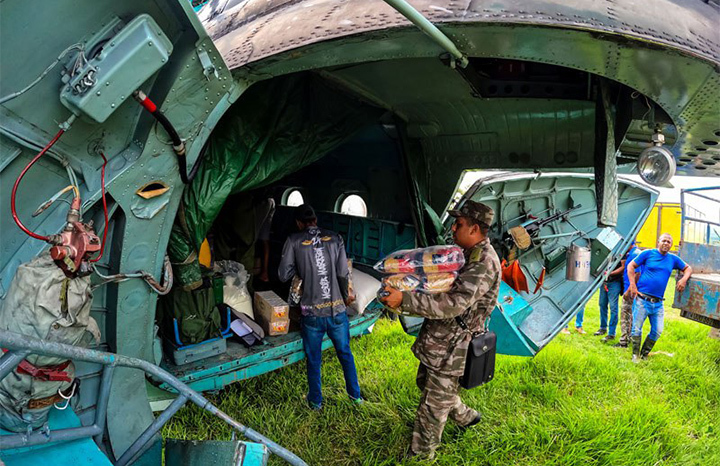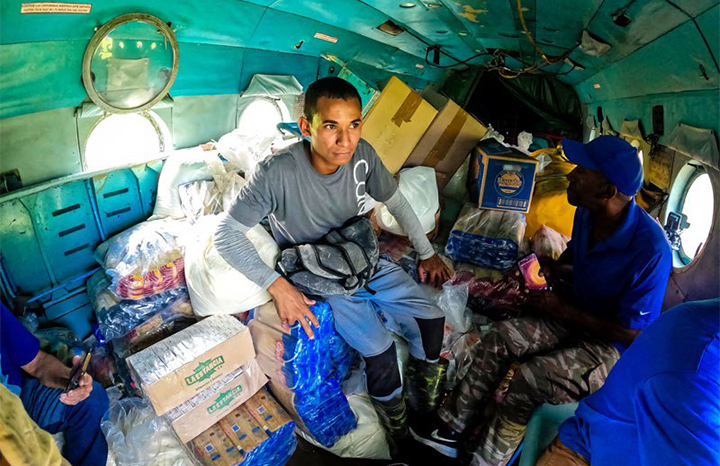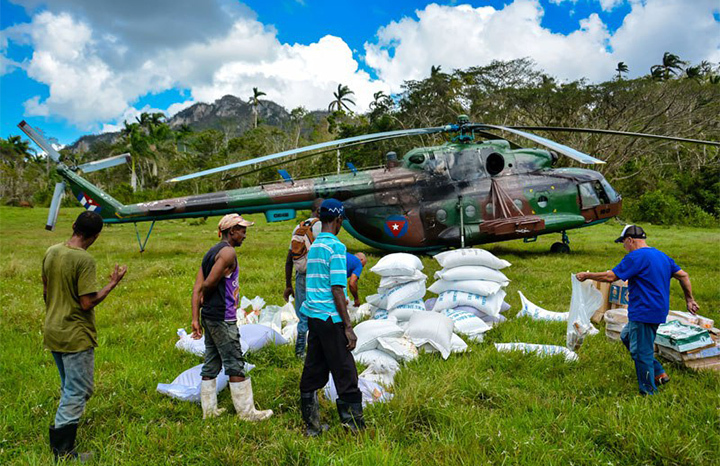When the helicopter’s rotors seemed to slice through the treetops in Naranjo Dulce, Holguin, María Ramírez Escalona dropped her backpack and ran. Almost stampeding, from the coffee plantation to see the aircraft up close for the first time in her life.
She wasn’t the only one, as the residents of this hard-to-reach community in the Holguin municipality of Sagua de Tanamo remember that moment as a historic evento. A story they say they will tell their grandchildren and great-grandchildren about the day food arrived from the sky in their area.
Getting to the El Progreso community, in the heart of the Sagua-Baracoa mountain range, is never easy, not even in times of plenty. The main town is 28 kilometers away. Most of the journey along the Sagua Riverbed, with 22 river crossings that are impassable during periods of high water.

Miguel Revé says that when the people in the area learned that a helicopter would be coming to deliver the supplies, they were overjoyed. Personally, several people said they would come to help unload it just to see the aircraft on the ground. Because they had never seen one before, and neither had he, the local delegate.
And so it was that, at the El Jobo baseball field, Colonel Miguel Savón Favier, the helicopter’s commander, meticulously made the final weight calculations and checked the balance of the nearly three tons of food. Minutes before taking flight over the challenging course of the Sagua River, in search of the isolated communities.
To accomplish these missions, he emphasizes, it is essential to execute them with the utmost safety. Ensuring compliance with all the requirements imposed by a complex flight of this type. The locations they must reach are places that, to be overflown, require navigating rugged terrain and exhaustive ground preparation to minimize, above all, flight time and fuel consumption.
Yadelín de la Cruz Fernández, president of the Municipal Defense Council of Sagua de Tanamo, recounts that reaching El Progreso was impossible after Hurricane Melissa.

For this reason, she explained, they were forced to request either ground transportation or an air transport capable of guaranteeing the delivery of basic food supplies. Like medicine, and other necessary resources to the population of that isolated community. Because the river’s flooding left a sandbar that completely blocked access.
De la Cruz Fernández explained that the operation was conceived with three food distribution points. Also from those locations to the rest of the districts, the supplies would be transported by mule trains. The only way to reach the warehouses in El Progreso, Los Mangos, and Naranjo Dulce.

What followed was a story with a happy ending, in which the curiosity to see, touch, and take pictures next to a helicopter brought all the residents together around an act of basic survival.
Today, the delegate of Naranjo Dulce says he was very pleased with the presence of the helicopter and with everyone who came to help and bring the much-needed resources. Still amazed by that day when the provisions descended from the sky as an essential gesture that the mountain acknowledged with smiles.
With information from Juan Carlos Carreras/Cuban News Agency
- The Day Food Arrived from the Sky in Naranjo Dulce - 26 de November de 2025
- Government Measures Aim for Business Development - 26 de November de 2025
- US Blockade Affects Cochlear Implant Program in Holguin - 25 de November de 2025

